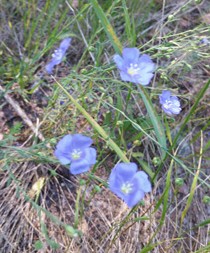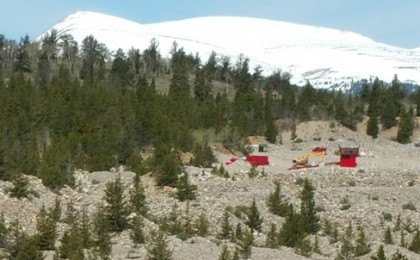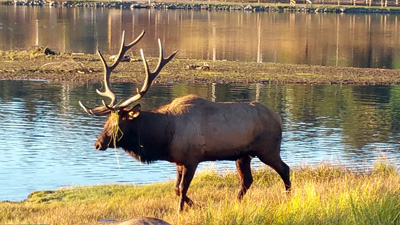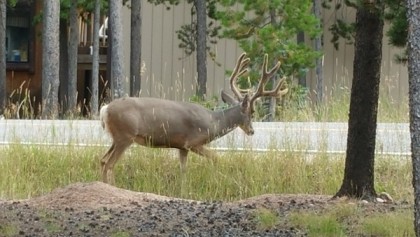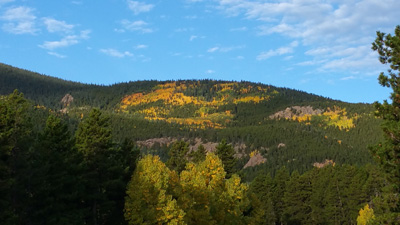Beltane Beltane Moon
Up early today. Too early. 3:00 am. Sigh. Still, got blogging done, e-mails sent and my high intensity workout in before leaving for my first Native Plant Master class in Morrison’s Mt. Falcon Park.
On the way I got gas at Conoco rather than the Loaf and Jug (Rumi, Omar?). I did that because I wanted a breakfast burrito from the best breakfast place in town according to reviews. But when I pulled up, the best breakfast place in town was gone. Not there. Vanished. Disoriented me for a bit, even though it was a food wagon. Not sure where it went, but I found it disconcerting to have an entire business, one I’d seen frequently since we moved here, disappear. Not to mention that I wanted breakfast and now no longer had time to stop elsewhere.
The dewpoint/temperature convergence coupled with lots of moisture in the air gave the mountains long tendrils of fog slipping through the pines and white crowns like so many of my friends. Atypical. The effect is very schwarzwald. This could be Bavaria.
In Morrison I turned off 285 North, which heads into Denver, and onto Colorado 8. It goes into Morrison, passing by the Fort, the adobe restaurant I mentioned some time back. Just a mile or two past the turnoff for Mt. Falcon Park where I was headed is the well known Red Rocks Amphitheater.
These Coloradans are a hearty group. Every one came with a backpack, obviously used before, rain gear, hiking boots and some had water repellent, zippered pants over their regular pants. One young woman, recently moved here from North Carolina, had bananas, clementines and granola bars stuck in several mesh pockets.
I say hearty because we each dutifully consulted our Colorado Flora field guide, our plant identification list and the Native Plant Master guide for Mt. Falcon Park (these last two distributed this morning as course material) in the constant and, at times hard, rain. It rained as we investigated a pretty five-petaled plant whose flowers change color after pollination. It rained while we investigated the shrub with trumpet shaped flowers that stood next to it. It poured down rain as we used Colorado Flora to narrow down the two species of cypress that stood next to each other.
Further along the trail, yes, it rained, we found a vetch, one of two species of the pea family we looked at. Vetch takes up selenium from the soil and concentrates the mineral in its stalk and leaves. Horses and cows get the blind staggers from the selenium so, though a native, it’s an unwelcome plant in pastures. Plants that take up soil minerals and concentrate them in their stalk and leaves have created a new discipline, geo-botany. Geo-botany uses plant analysis to find places where toxic minerals are present in the soil.
Did I mention it rained? All the time, from moderately hard to pelting. Not a usual Colorado problem. This is an anomalous May, though May is usually wet. So I’m told.
We had a recently retired geologist in our class. We stopped among shrubs and short trees for a snack. He noted that was a geologically important spot. The Fountain formation, red sandstone and crumbly red shale, the same formation that makes up the Red Rock amphitheater, gave way to the granitic rock of the true Rocky Mountains only 5 or 6 feet away. “This means we go,” Tom said, “from 250 million year old sandstone to billion year old rock.” To the east the sandstone, remnant of a much earlier mountain range, covers the same billion year old rock exposed during the Laramide orogeny, the mountain building episode that formed the Rockies.
Since Kate had a pacemaker appointment, I had to leave early. I was not unhappy though I look forward to the next class. May it be dry. Of course, then it might be hot.
